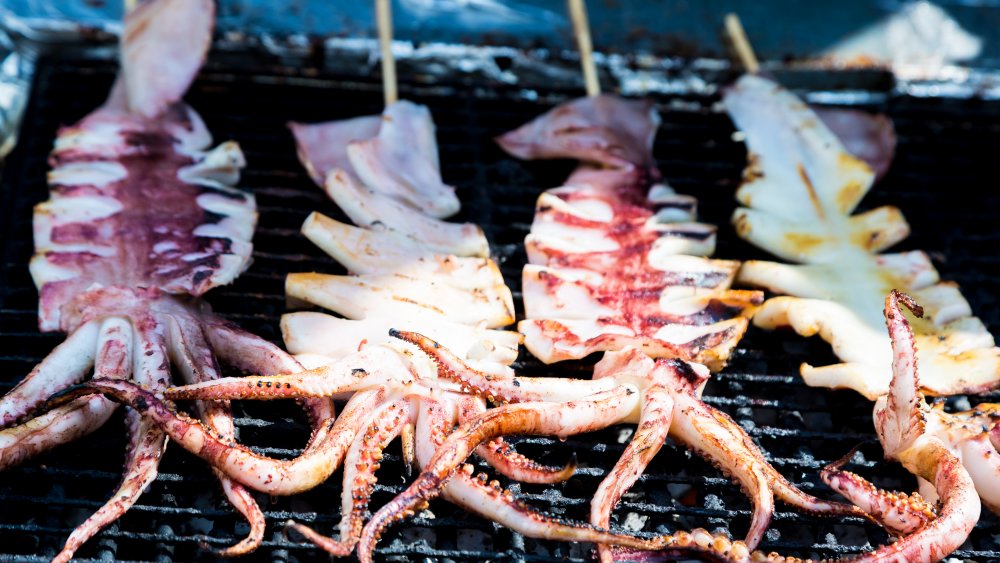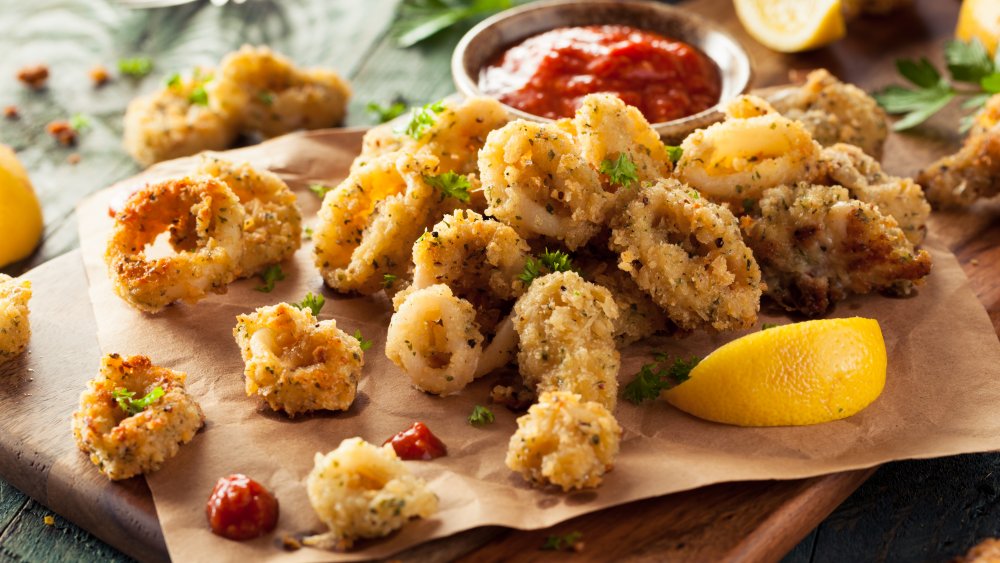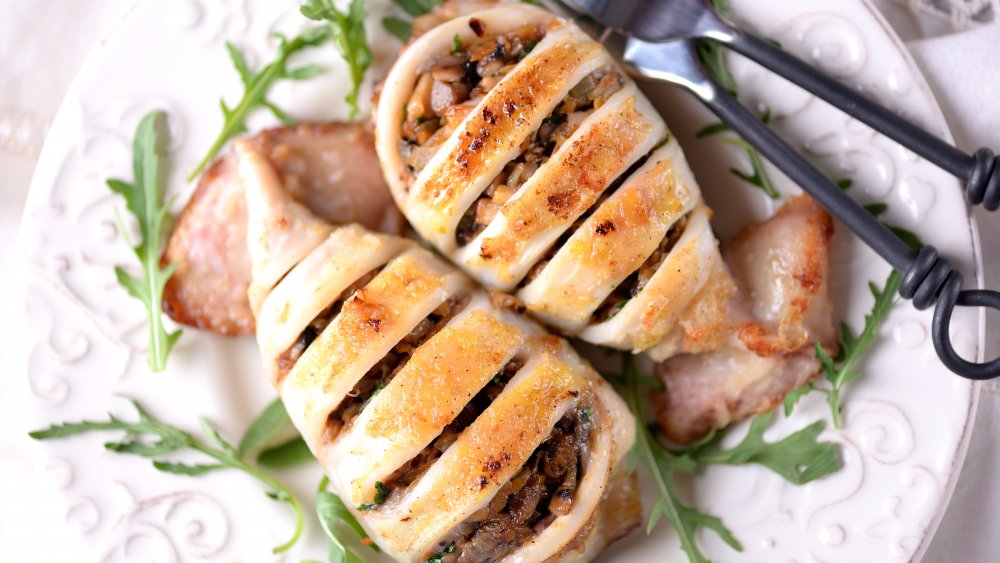Read This Before You Order Fried Calamari At A Seafood Restaurant
Calamari is the ultimate seafood underdog. When deep-fried squid found its way onto North American menus in 1975 (via Timoti's), restaurants made a point of calling the dish by its Italian name to make it sound more exotic and less cephalopod-ish. And they were so unsure the dish would be successful that they relegated it to smaller portions on the appetizer menu (via Salon). The rest, of course, is history.
Calamari proved to be immensely popular and can be found on the menus of chain restaurants, pizzerias, and fine-dining establishments that swing Italian, seafood, or Asian. Calling squid by its Italian name probably had little to do with this success story. Calamari won over American diners by being delicious. Before diving into our next heaping plate of fried squid rings, let's pause for a moment. Calamari tastes so good because it is in on what Whole Health Clinic calls the "cruel cosmic joke" played on humans: If it tastes good, then it's probably bad for you.
How bad is calamari for you, really?
Calamari by itself is one of many protein-rich seafood options. The devil is in the deep fryer. Thanks to a recent U.S. law requiring chain restaurants to provide nutrition information for their menu items (via Taste of Home), we know exactly how bad one chain's version of the calamari appetizer is for you. Red Lobster's peppercorn-panko calamari weighs in at 990 calories with 76 grams of fat, 230 mg of cholesterol, and 3,410 mg of sodium. If you're not sharing that appetizer, you're getting roughly half a day's worth of calories (based on a 2,000-calorie-a-day diet) and enough sodium for nearly a day and a half (via Eat This, Not That!).
Consuming too many calories can lead to obesity and its accompanying health risks, including diabetes, heart disease, and joint problems (via CDC). Fats, in general, aren't bad for you beyond the calorie load they provide. But saturated fat – like the 7 grams contained in Red Lobster's fried calamari – can boost cholesterol (via Harvard Health). Excess sodium increases blood pressure and can harm the heart, kidneys, and brain (via the National Library of Medicine).
Find a way to prepare calamari that isn't fried
But let's not throw out the calamari with the fryer oil. A 3.5-ounce portion of plain squid has just 90 calories and 16 grams of protein. It also has some vitamin A, calcium, and iron (via Livestrong). Calamari also happens to be loaded with enough copper to give you nearly all you need for the day in a single, decent-sized portion (via Food Network). Squid that isn't fried still has a significant amount of cholesterol but only a moderate amount of saturated fats, which contribute to levels of "bad" cholesterol. As another item on the plus side, squid has healthy omega-3 fatty acids, which promote heart health (via Healthline).
The trick is to find a healthier way to prepare calamari. Healthline suggests four non-fry options: broiled, baked with panko breading or gluten-free bread crumbs, or roasted. The Food Network has a baked calamari recipe that uses panko and tortilla-chip crumbs to mimic the crispy crunch of fried food. It may not taste as good as fried calamari, but you can console yourself with the fact that it's better for you.


